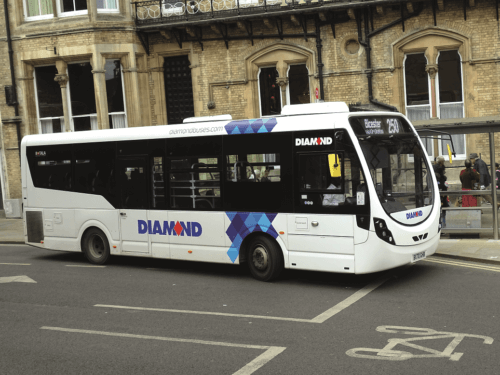Oxfordshire County Council has been awarded £12.7m to fund cheaper youth fares, bus priority measures and rural services.
Oxfordshire has been awarded £12.7 million of Government funding for measures to get people out of their cars and back on to buses.
Earlier this year, Oxfordshire County Council was one of 31 successful applicants out of 79 to receive an ‘indicative allocation’ for its Bus Service Improvement Plan (BSIP). It followed the council’s bid for £56m from the government’s National Bus Strategy fund.
This £12.7m has now been confirmed by the Department for Transport and will support measures over the next three years, including cheaper fares for under-19s, new rural services, bus priority improvements across the county and proposed traffic filters to reduce journey times and support the introduction of new zero-emission electric buses.
Councillor Andrew Gant, Oxfordshire County Council’s Cabinet Member for Highways Management, said: “In the context of a significantly reduced funding allocation nationwide, with only 40% of BSIPs receiving any money, £12.7m represents a significant boost for bus users in Oxfordshire. It is welcome confirmation from the Government that our approach to prioritise public transport is the right one.
“Effective public transport is key to many of our priorities as a council. Combined with many other measures we are working on with our partners, this funding will put us on a positive path to making bus travel more attractive and environmentally friendly than ever before.
“Supporting cheaper travel for young people, including the introduction of a £1 flat fare within Oxford as well as reduced fares for under-19s countywide, is a priority. We want young people to adopt sustainable transport habits which will then stay with them throughout their lives.”
Passenger numbers in Oxfordshire, which had been in decline between 2014 and 2019, were badly hit by the impact of the pandemic. Bus companies have also suffered from rising fuel prices, shortages of drivers, and uncertainty about financial support from the Government. The BSIP is one of a number of measures being brought in by the council and its partners, including the bus operators, other local authorities and major employers, to increase passenger numbers. Others include: a new combined park and bus ticket coming later this year to the city’s five park & ride sites; a successful bid to fund a fleet of 159 electric buses in a package worth £82.5m; Oxfordshire’s inaugural bus summit, which was held in June and brought together a host of organisations to discuss how to improve public transport in the county; the launch of a campaign highlighting the economic benefits to encourage people to use buses to help combat the cost-of-living crisis, and; the creation of an enhanced partnership between Oxfordshire County Council and the bus operators to improve services.


